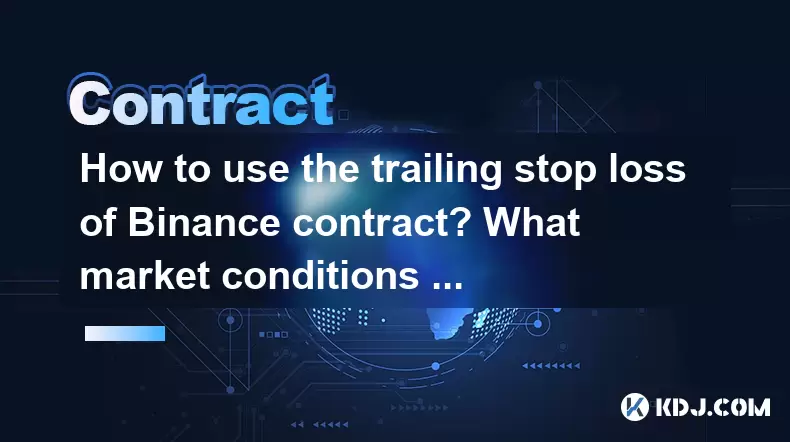-
 Bitcoin
Bitcoin $115200
-2.68% -
 Ethereum
Ethereum $3601
-5.16% -
 XRP
XRP $3.035
-2.96% -
 Tether USDt
Tether USDt $0.9997
-0.04% -
 BNB
BNB $764.5
-5.43% -
 Solana
Solana $168.1
-5.92% -
 USDC
USDC $0.9998
-0.02% -
 Dogecoin
Dogecoin $0.2090
-4.80% -
 TRON
TRON $0.3272
-0.49% -
 Cardano
Cardano $0.7306
-5.00% -
 Hyperliquid
Hyperliquid $39.16
-12.22% -
 Stellar
Stellar $0.3967
-4.96% -
 Sui
Sui $3.566
-5.95% -
 Chainlink
Chainlink $16.55
-6.57% -
 Bitcoin Cash
Bitcoin Cash $552.3
-3.90% -
 Hedera
Hedera $0.2516
-4.69% -
 Avalanche
Avalanche $21.99
-5.75% -
 Toncoin
Toncoin $3.621
-0.28% -
 Ethena USDe
Ethena USDe $1.000
-0.03% -
 UNUS SED LEO
UNUS SED LEO $8.951
0.02% -
 Litecoin
Litecoin $105.9
-3.59% -
 Shiba Inu
Shiba Inu $0.00001232
-5.00% -
 Polkadot
Polkadot $3.640
-5.55% -
 Uniswap
Uniswap $9.048
-7.03% -
 Monero
Monero $301.8
-1.51% -
 Dai
Dai $0.9999
-0.01% -
 Bitget Token
Bitget Token $4.334
-3.66% -
 Pepe
Pepe $0.00001064
-6.17% -
 Cronos
Cronos $0.1367
-5.78% -
 Aave
Aave $259.2
-4.59%
How to use the trailing stop loss of Binance contract? What market conditions are suitable for?
Binance's trailing stop loss tool helps traders lock in profits during uptrends and protect against sudden price drops by adjusting dynamically to market movements.
May 18, 2025 at 12:56 am

Introduction to Trailing Stop Loss on Binance
Binance, one of the leading cryptocurrency exchanges, offers a variety of tools to help traders manage their positions effectively. One such tool is the trailing stop loss, which can be particularly useful for maximizing profits while limiting losses. This feature allows traders to set a dynamic stop loss that adjusts based on the price movements of the asset. Understanding how to use the trailing stop loss and under what market conditions it is most suitable can significantly enhance a trader's strategy.
How to Set Up a Trailing Stop Loss on Binance
Setting up a trailing stop loss on Binance is a straightforward process, but it requires attention to detail to ensure it aligns with your trading goals. Here's how you can do it:
- Log into your Binance account and navigate to the Futures or Options trading section.
- Select the contract you wish to trade.
- Open a new position or select an existing one.
- Click on the "Stop-Loss/Take-Profit" button on the trading interface.
- Choose "Trailing Stop Loss" from the options.
- Set the callback rate. This is the percentage or price level by which the stop loss will trail the market price. For example, if you set a 2% callback rate and the market price increases, the stop loss will move up by 2% of the new high.
- Confirm the settings and monitor your position.
It's important to understand that the trailing stop loss will only move up as the market price increases. If the price drops, the stop loss remains at its last set level until the price moves higher again.
Understanding the Callback Rate
The callback rate is a critical component of the trailing stop loss feature. It determines how closely the stop loss follows the market price. A smaller callback rate means the stop loss will be triggered more quickly if the price starts to fall, potentially securing smaller profits but also reducing the risk of significant losses. Conversely, a larger callback rate allows for more price fluctuation before the stop loss is triggered, which can lead to larger profits if the price continues to rise but also increases the risk of larger losses if the price suddenly drops.
Market Conditions Suitable for Trailing Stop Loss
The effectiveness of a trailing stop loss largely depends on the market conditions. Here are some scenarios where it can be particularly beneficial:
- Trending Markets: In a strong uptrend, a trailing stop loss can help lock in profits as the price continues to rise. As the market moves higher, the stop loss will adjust upwards, securing gains without the need for constant manual adjustments.
- Volatile Markets: In markets with high volatility, a trailing stop loss can protect profits during sudden price swings. By setting a reasonable callback rate, traders can stay in the trade longer while still having a safety net in place.
- Breakout Scenarios: When a cryptocurrency breaks out of a consolidation pattern, a trailing stop loss can be used to ride the momentum while protecting against a potential reversal. As the price moves away from the breakout point, the stop loss will adjust, helping to capture the upward move.
Limitations and Risks of Trailing Stop Loss
While trailing stop loss can be a powerful tool, it's not without its limitations and risks. Understanding these can help traders use the feature more effectively:
- False Breakouts: In choppy or sideways markets, a trailing stop loss can be triggered by false breakouts, leading to premature exits from potentially profitable trades.
- Slippage: During periods of high volatility or low liquidity, the actual execution price of the stop loss order may differ from the set level, resulting in slippage and potentially larger losses.
- Over-Reliance: Relying solely on trailing stop loss without considering other market indicators or trading strategies can lead to suboptimal trading decisions.
Practical Example of Using Trailing Stop Loss
To illustrate how a trailing stop loss works in practice, consider a scenario where you enter a long position on BTC/USDT at $30,000. You set a trailing stop loss with a 2% callback rate.
- Initial Stop Loss: The stop loss is initially set at $29,400 (2% below the entry price).
- Price Increase: If the price rises to $31,000, the stop loss will adjust to $30,380 (2% below the new high).
- Further Increase: If the price reaches $32,000, the stop loss moves to $31,360.
- Price Decline: If the price then drops to $31,500, the stop loss remains at $31,360.
- Trigger: If the price continues to fall and hits $31,360, the trailing stop loss will be triggered, closing the position.
This example demonstrates how the trailing stop loss can help secure profits while still allowing for potential further gains.
FAQs
Q: Can I use a trailing stop loss on all Binance contracts?
A: Trailing stop loss is available on most futures and options contracts on Binance, but it's always best to check the specific contract details as some might have different features.
Q: How often does the trailing stop loss update?
A: The trailing stop loss updates in real-time based on the market price movements. However, the exact frequency can depend on the market's liquidity and the exchange's order matching engine.
Q: Can I combine a trailing stop loss with a take-profit order?
A: Yes, Binance allows you to set both a trailing stop loss and a take-profit order on the same position, providing a comprehensive risk management strategy.
Q: What happens if the market gaps through my trailing stop loss level?
A: If the market price gaps through your trailing stop loss level, the order will be executed at the next available price, which may result in slippage. This is a risk to consider, especially in highly volatile markets.
Disclaimer:info@kdj.com
The information provided is not trading advice. kdj.com does not assume any responsibility for any investments made based on the information provided in this article. Cryptocurrencies are highly volatile and it is highly recommended that you invest with caution after thorough research!
If you believe that the content used on this website infringes your copyright, please contact us immediately (info@kdj.com) and we will delete it promptly.
- Cardano Price, Pi Network, and Crypto Presales: What's the Buzz?
- 2025-08-02 08:50:12
- XRP Fund Success: Teucrium CEO Reveals Trillions on the Horizon
- 2025-08-02 09:10:12
- Challenge Coins: More Than Just Collectibles – A Military Tradition
- 2025-08-02 08:30:12
- Under the Radar: Hunting for 100x Crypto Gems in a Pi Network World
- 2025-08-02 08:30:12
- Bitcoin, Solana, and Altcoin Season: What's Hot and What's Not?
- 2025-08-02 07:10:12
- Toncoin, Rollblock, and the Token Offering Landscape: A New York Minute
- 2025-08-02 07:10:12
Related knowledge

Why is my Bitstamp futures position being liquidated?
Jul 23,2025 at 11:08am
Understanding Futures Liquidation on BitstampFutures trading on Bitstamp involves borrowing funds to open leveraged positions, which amplifies both po...

How to report Bitstamp futures for taxes?
Jul 30,2025 at 08:35am
Understanding Bitstamp Futures and Taxable EventsWhen trading Bitstamp futures, it’s essential to recognize that these financial instruments are treat...

Does Bitstamp offer inverse contracts?
Jul 23,2025 at 01:28pm
Understanding Inverse Contracts in Cryptocurrency TradingIn the realm of cryptocurrency derivatives, inverse contracts are a specific type of futures ...

What is the difference between futures and perpetuals on Bitstamp?
Jul 27,2025 at 05:08am
Understanding Futures Contracts on BitstampFutures contracts on Bitstamp are financial derivatives that allow traders to speculate on the future price...

How to find your Bitstamp futures trade history?
Jul 23,2025 at 08:07am
Understanding Bitstamp and Futures Trading AvailabilityAs of the current state of Bitstamp’s service offerings, it is critical to clarify that Bitstam...

Can I use a trailing stop on Bitstamp futures?
Jul 23,2025 at 01:42pm
Understanding Trailing Stops in Cryptocurrency TradingA trailing stop is a dynamic type of stop-loss order that adjusts automatically as the price of ...

Why is my Bitstamp futures position being liquidated?
Jul 23,2025 at 11:08am
Understanding Futures Liquidation on BitstampFutures trading on Bitstamp involves borrowing funds to open leveraged positions, which amplifies both po...

How to report Bitstamp futures for taxes?
Jul 30,2025 at 08:35am
Understanding Bitstamp Futures and Taxable EventsWhen trading Bitstamp futures, it’s essential to recognize that these financial instruments are treat...

Does Bitstamp offer inverse contracts?
Jul 23,2025 at 01:28pm
Understanding Inverse Contracts in Cryptocurrency TradingIn the realm of cryptocurrency derivatives, inverse contracts are a specific type of futures ...

What is the difference between futures and perpetuals on Bitstamp?
Jul 27,2025 at 05:08am
Understanding Futures Contracts on BitstampFutures contracts on Bitstamp are financial derivatives that allow traders to speculate on the future price...

How to find your Bitstamp futures trade history?
Jul 23,2025 at 08:07am
Understanding Bitstamp and Futures Trading AvailabilityAs of the current state of Bitstamp’s service offerings, it is critical to clarify that Bitstam...

Can I use a trailing stop on Bitstamp futures?
Jul 23,2025 at 01:42pm
Understanding Trailing Stops in Cryptocurrency TradingA trailing stop is a dynamic type of stop-loss order that adjusts automatically as the price of ...
See all articles

























































































